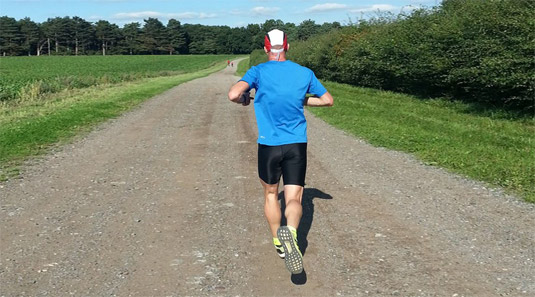
Are you running at different paces?
Running at different paces?
One of the great things about my job as a running coach is that I get to speak to lots of runners on a daily basis. Very early on I began discovering that everyone is different – why they started, what they are aiming for, what motivates them – no two runners are ever the same.
However, whilst the above is certainly true…
I’m going to immediately contradict myself and say that as I have spoken to more runners, I have started to notice that there are in fact some similarities. There are two that have really stood out for me that I would like to discuss further:
- The range of paces used within a weekly training regime
- The length of the longest run during marathon training
Although closely linked, these are both well worthy of posts in their own right. Here I am going to focus on the first point – the range of paces (or lack thereof) that runners use.
How have I discovered this? Two reasons – as I said, firstly talking to runners on a daily basis, and then secondly everyones best friend (or worst enemy) – ‘Strava’. Not only can you nose through Facebook to find out what your former school friends are up to twenty years after you last spoke to them, you can now also go on Strava to find out what paces they are running at. Chances are that much of their running will be done within a fairly small range of paces.
In the case of beginners who are yet to really learn about or experience the full range of different training methods, it is quite possible that they will have one running pace. This is a pace that is used in all training runs, and in races from 5km up to the half marathon. If feeling good it may be slightly quicker and likewise if feeling sluggish it may be a bit slower, though generally speaking the pace is very steady and only varies slightly. It is only when trying to run marathons where this paces starts to drop off significantly – though the reasons for that will be discussed more in a post covering point 2 made above.
For more experienced runners who do use fartlek’s, intervals, or tempo type running during their week – the pace will vary in these and that is great. However, it is away from these more specific sessions where the one paced running comes in. Longer runs, shorter runs, and runs done before or after the hard workouts often all seem to blend in to all be done at the same pace.
Why does this happen?
After finding that this does happen, the next question is why it happens? Two words – ‘comfort zone.’ It is a place that every human being on this planet likes to spend their time (admittedly some spend more time there than others). When it comes to running in the comfort zone – that nice steady place is exactly where I mean. A pace that is not too hard, not too easy, but easy to justify that you are getting benefits from.
Advice
Before you set out the door, remember to ask yourself what are you trying to achieve from the run? If it is supposed to be a recovery run then make sure that you run slowly. Don’t worry what the Garmin will say or what people will think – your job on this occasion is to run slowly so that you can recover. If you are looking to push yourself then remind yourself that it is going to feel tougher than normal in the second half when you need to pick the pace up. If you do just fancy a steady run, then maybe the ‘comfort zone’ pace is ok today. I know lots of people reading this will want to know numbers, so to use myself as an example. My fastest steady running (non workout specific) will be done at around 5.30 per mile pace, though at the other end I have no problem with running miles in the 8.30s when tired or really needing to recover. A full 3 minutes per mile of range, and I do use that full range regularly.
Conclusion
Is it wrong to go out and enjoy a nice steady run done at a pace you find most comfortable? Of course it is not. However, if you are serious about wanting to improve then getting the full range of paces is important. Please do get in touch if you have further questions or want to know more about how this may apply to your own situation.

